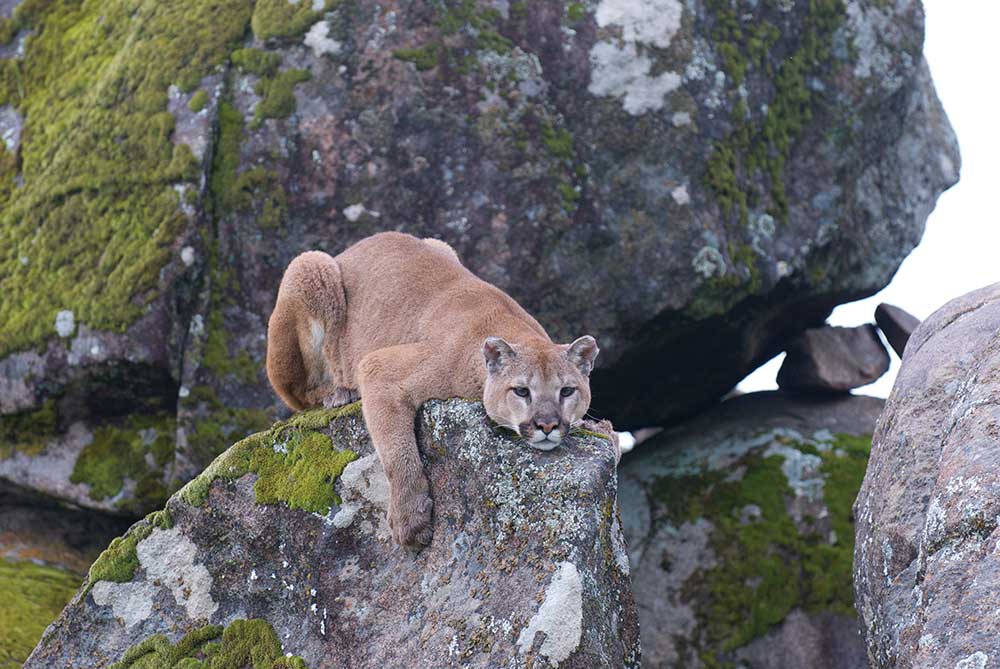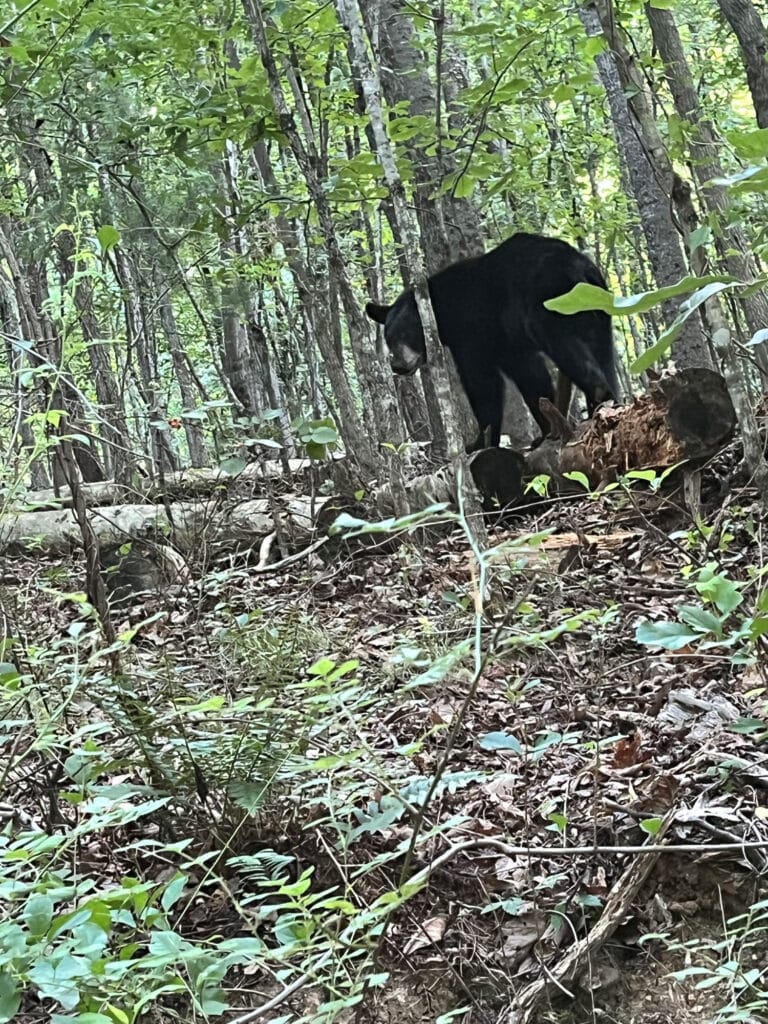The Florida panther is one of dozens of endangered species in the Southeast whose recovery is jeopardized by the Trump administration rollbacks
The most important conservation law on the books—The Endangered Species Act—is under attack.
It’s not just wolves and salamanders that will suffer. Our favorite adventure spots are also a critical habitat for many rare species.
It is perhaps the most selfless law our country has ever passed: the Endangered Species Act (ESA). The ESA was signed into law in 1973 by—of all people—Richard Nixon, with strong bipartisan support, ushering in a new era of conservation in the United States.
Under the ESA, species with declining populations can be listed under the titles threatened or endangered. Threatened species are those that are at immediate risk of becoming endangered, while the endangered species are those that are at risk of becoming extinct.
Most importantly, species on the Endangered Species list must have their critical habitat protected. The endangered red wolf, for example, must have a designated amount of habitat protected in the wild so it can recover. By conserving vital habitat for threatened and endangered species, the ESA has had a 99 percent success rate in preventing extinction since its inception.
“The ESA has allowed the designation of millions of acres of critical habitat, which is crucial to species’ survival and recovery,” according to Noah Greenwald, endangered species director at the Center for Biological Diversity. “In fact, imperiled species with federally protected critical habitat are twice as likely to be recovering as those without.”
The Southeast and Mid-Atlantic boasts some of the highest biodiversity in the country, largely because of the many different ecosystems, from mountain tops to ocean bays. The places we go to play are the same places that species, endangered or not, need to survive.
Weakening the Endangered Species Act?
In August, the Trump administration announced a series of revisions to the ESA, primarily to reduce obstacles it places on the oil and gas industries. Trump-appointed Secretary of the Interior David Bernhardt, a former oil lobbyist, claims that the changes will minimize “regulatory burdens” placed on oil and gas companies. The changes narrow the scope of protections for species, allow agencies more leeway, and give industry more influence. The changes will also weigh economic impacts of listing a species more heavily.
The ESA currently bases their listing of endangered or threatened species solely on scientific data, “without reference to possible economic or other impacts of such determination.” The administration has removed that phrase, opening the door for roads, pipelines, golf courses, and other development to occur in places where listed species would previously have been protected.
While economics should be considered when creating policy solutions to protect wildlife, doing so when determining whether a species should be listed “would be like considering the costs of treatment when making a medical diagnosis,” argues Holly Pearen, senior attorney with the Environmental Defense Fund (EDF). “The cost of treatment in no way determines the science-based diagnosis. The same must hold true for diagnosing the health of at-risk wildlife.”
A pressing example in our region is the development of the Atlantic Coast Pipeline, which is proposed to go through West Virginia, Virginia, and North Carolina. The pipeline would degrade sensitive habitats of four listed species in its path, the clubshell mussel, the madison cave isopod, the indiana bat, and the rusty-patched bumble bee. The Atlantic Coast Pipeline claims that it is, “a critical infrastructure project that will strengthen the economic vitality, environmental health, and energy security of the Mid-Atlantic region.” While construction has been halted to assess impacts on endangered species, it is currently under review by the Supreme Court. Under Trump’s proposed changes, this and future development of its kind will be allowed to take place, regardless of the impact it has on endangered species.
Additionally, the administration is seeking to make it easier to delist species from the ESA. Bernhardt argues that the standards for delisting a species have been pushed higher than the act initially intended. “The goal [of the act] is recovery — to send the healthier patients home where they can continue to receive the lower level of care they still need.” The concern with Bernhardt’s approach is that species will be delisted prematurely, sending recovering populations plummeting.
“The stated intent [of the revisions] is to expand oil and gas drilling,” says Greenwald. “It is quite possible we will lose species because of the hostility and callousness shown by this administration.” In the first 22 months of the Trump administration, only 15 species were listed, the fewest since Reagan. “They are gumming up the works. We are hearing from people inside the Department of Interior that biologists’ recommendations to list certain species are just sitting there, unsigned. They are basically following an oil and gas wishlist to weaken protections,” Greenwald says.
The proposed changes have yet to be finalized after a period of public comment last fall. Once finalized, the provisions will have to be passed by both houses of Congress, where representatives backed by extractive industries will push hard to have it passed.
The ESA Is Not Enough
“The ESA is a landmark act that is the cornerstone of species recovery in our country and a model for the rest of the world,” says Jason Mays, a U.S. Fish & Wildlife biologist. “But federal listing of a species should not be a primary goal by itself. Rather, we should invest in holistic conservation of ecosystems—with listing of critically imperiled species as a measure of last resort.”
While the ESA has been extremely successful at preventing species on the edge of extinction from being lost forever, it is not intended to protect biodiversity as a whole. “The ESA does benefit species where they have become so rare that recovery is impossible otherwise, but it is important to note that recovering a species before they need listing is much easier than after they need listing,” Mays argues. “For many species, what is left to work with by the time of listing is not enough to have good options for long-term recovery. We may be able to prevent extinction, but may be left with too few healthy populations to effectively recover the species.”
J.J. Apodaca, associate executive director and director of science with The Amphibian and Reptile Conservancy, argues that citizens and scientists alike should be doing everything in their power to save biodiversity. Prioritizing the protection of all species, whether or not they are on the brink of extinction, is vital to our well-being as humans. “Eventually, the loss of wildlife, plants, and all biodiversity will impact everyone. Whether that is the loss of iconic species, the loss of ecosystem services, or recreation, the loss of biodiversity really does impact our mind, body, and soul.”
The South’s Most Endangered Species
Meet the species in our region that will be extinct within a few decades (or sooner) without urgent and immediate interventions.
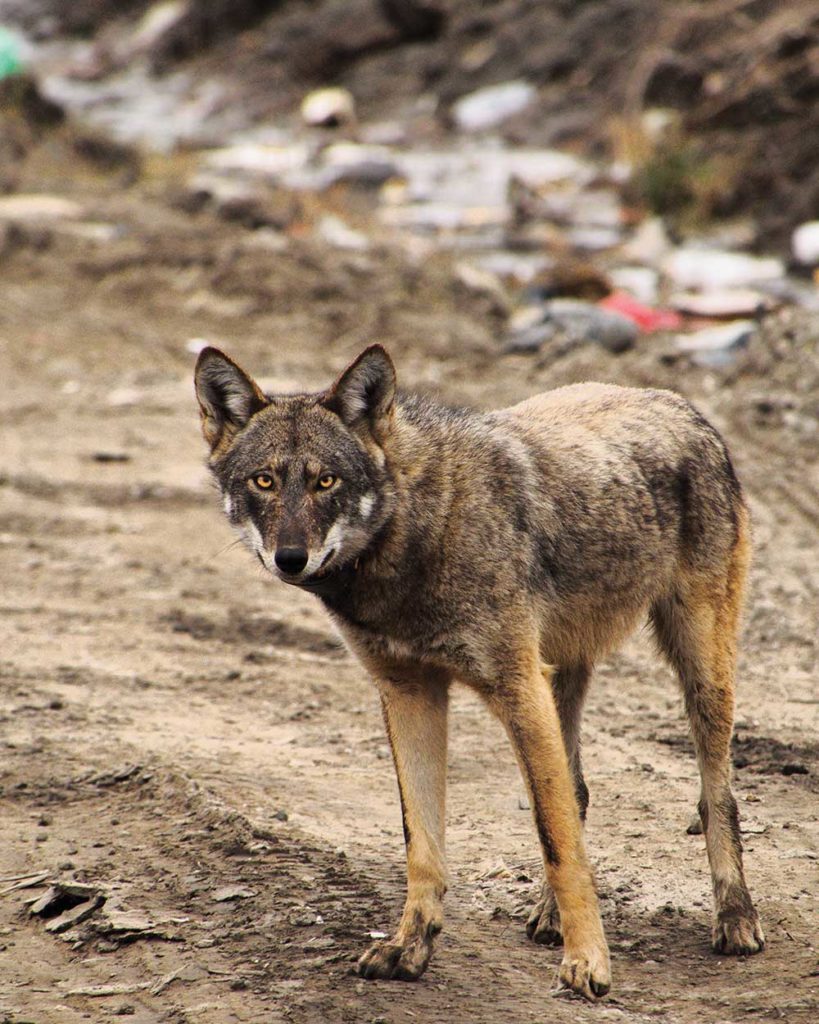
Red Wolf
The red wolves’ deep howls were once heard throughout Appalachia and the entire East Coast. Because of its wide distribution, the red wolf played an important role in a variety of ecosystems, from coastal lowlands to forested mountains. Now living in only a fraction of its range, the red wolf persists on small tracts of protected land in Eastern North Carolina. The red wolf is the world’s most endangered canid, and the Southeast’s only native wolf. It has lost more of its historical territory—99.7 percent—than any other large carnivore, including lions, tigers, and snow leopards.
A relative of the better-known gray wolf, the red wolf is distinguished by its reddish hue and smaller size. Throughout the 19th and 20th centuries, red wolves were nearly hunted to extinction. By 1980, hunting and habitat loss left less than 20 individuals in the wild. These same wolves were captured by the U.S. Fish and Wildlife Service (FWS) and put into a captive breeding program to bring back their population under the ESA. The population rebounded remarkably to over 140 individuals in the 21st century.
Unfortunately, a small group of hunters and landowners have taken aim at the red wolf and convinced the U.S. Fish & Wildlife Service to suspend its protections for the endangered wolf. Gunshot mortality remains the number-one killer of red wolves, whose numbers have dwindled to as few as 25.
Despite the challenges that red wolf conservationists face, the public has shown immense support for recovering red wolf populations. Of 55,000 comments submitted to the U.S. Fish & Wildlife Service regarding public opinion of red wolf conservation, 99.8 percent supported their recovery. But how can this be done? Ben Prater, a biologist with Defenders of Wildlife, argues that efforts should be focused towards more captive breeding programs and identifying other suitable recovery sites, including in other Southeastern states. “We have the habitat and ability to facilitate recovery. It comes down to political will and capital.”
Appalachian Elktoe Mussel
A small and unassuming creature, the Appalachian Elktoe Mussel lives in scattered populations in portions of several river systems in North Carolina and Tennessee. Once ranging throughout these rivers, the federally endangered elktoe mussel has seen a rapid decline, largely due to their specific habitat requirements. “The elktoe seems to be evolved to occupy the upper reaches of mountain rivers where the availability of food and minerals are scarce. A side effect of that specialization is that they are less resilient to alteration of their habitat,” explains Mays.
Mays says that elktoe require very clean water and a stable riverbed to survive. Sedimentation from construction projects and new roads prevents the mussels from completing their life cycle. “Young mussels need to settle onto very stable river bottoms where they can burrow down into the sand, but they must also receive sufficient oxygen. When the river bottom becomes fouled with silt from poor land practices, the juveniles don’t get enough oxygen and die.” Appalachian elktoes are an indicator of excellent water quality, so prioritizing their survival means ensuring clean water in our region for us and future generations.
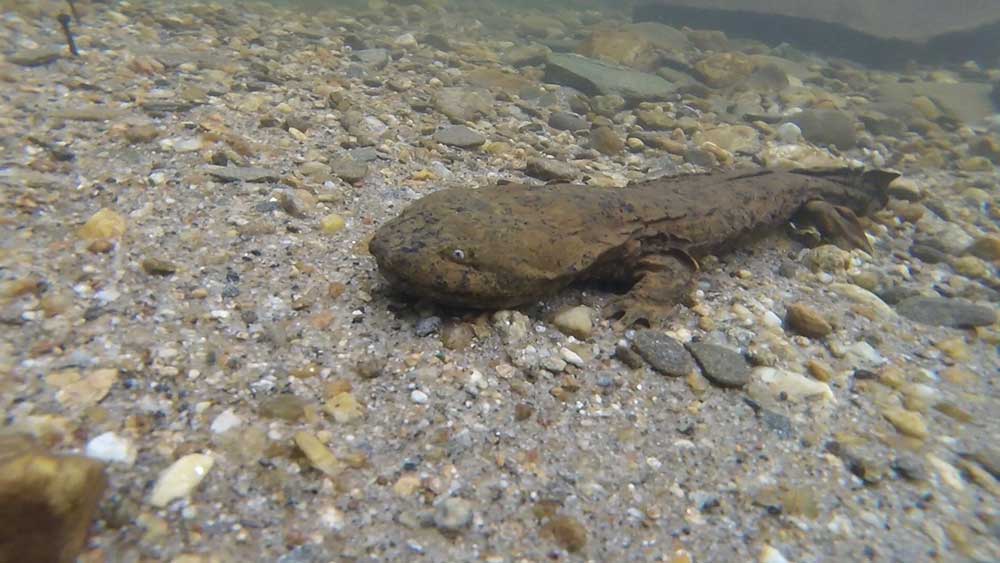
Hellbender
The largest salamander species in North America, the Eastern hellbender is native to cool, clean streams throughout watersheds along the Appalachian mountains. Reaching sizes of up to two feet, Hellbenders spend their lives on the bottoms of streams feeding on crayfish, other invertebrates, and in some cases even other hellbenders. These incredible, prehistoric-looking amphibians have been a part of Appalachian rivers for over 65 million years. However, pollution, particularly sedimentation, of these waterways has dramatically decreased hellbender populations. Hellbenders, and many other amphibians, breathe through their skin, making them especially vulnerable to pollutants. High levels of sediment on the riverbed bury their eggs, as well as the eggs of many other amphibians and fish, snuffing them out before they can hatch.
These remarkable creatures are in peril, but they have not yet received federally endangered status. Though they are considered endangered in some states, including North Carolina. “Unfortunately, that holds very little power over actions. It doesn’t even really affect what the state does in terms of development,” says Apodaca. That development and the subsequent sedimentation are some of the main reasons hellbenders are in decline. As a result, they are mostly only found on large chunks of public land, where the streams they rely on remain relatively clean.
Apodaca argues that conservation efforts outside of the ESA should be prioritized by politicians and the public if non-listed species like hellbenders are going to recover. “[The ESA] definitely has its strengths and weaknesses. However, without other conservation efforts, very few species actually recover due to ESA programs. We as a community need to build other tools that help facilitate recovery.”
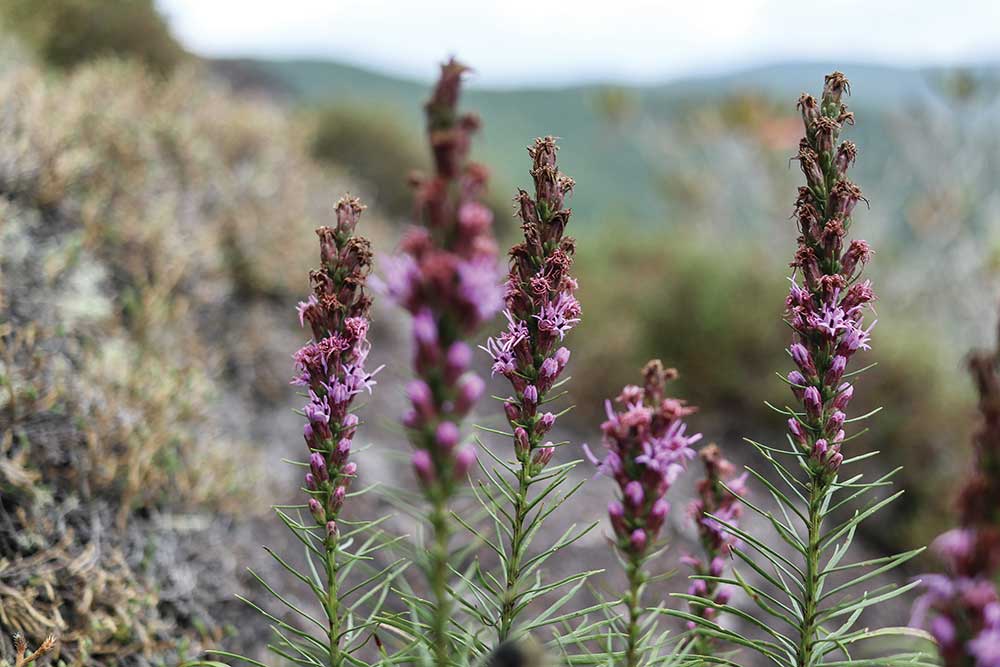
Endangered Plants
There are many endangered plants throughout the Southeast, from magnificent wildflowers to tiny lichens. While preventing these plants from going extinct is just as important as it is for their animal counterparts, plant conservationists face a different set of challenges. “One of the main distinctions between plants and animals under the Endangered Species Act, is the act makes it illegal to take an animal without a permit, but no such protection exists for plants,” Fish & Wildlife Service’s Gary Peeples explains. “The reason for this is that animals are a common resource, held in trust for all, so no one has the right to do what they want with wildlife. However, plants are personal property. Ownership of a plant goes with ownership of the land where the plant grows.”
Though many endangered plants are in trouble because of this distinction, outdoor enthusiasts can do their part in protecting these plants as well. The Fish & Wildlife Service suggests to “tread lightly and stay on designated trails. Vegetation on popular high mountains has virtually been destroyed by human trampling.” Though wandering several feet off-trail may seem harmless, it can be the difference in keeping an endangered plant alive.
